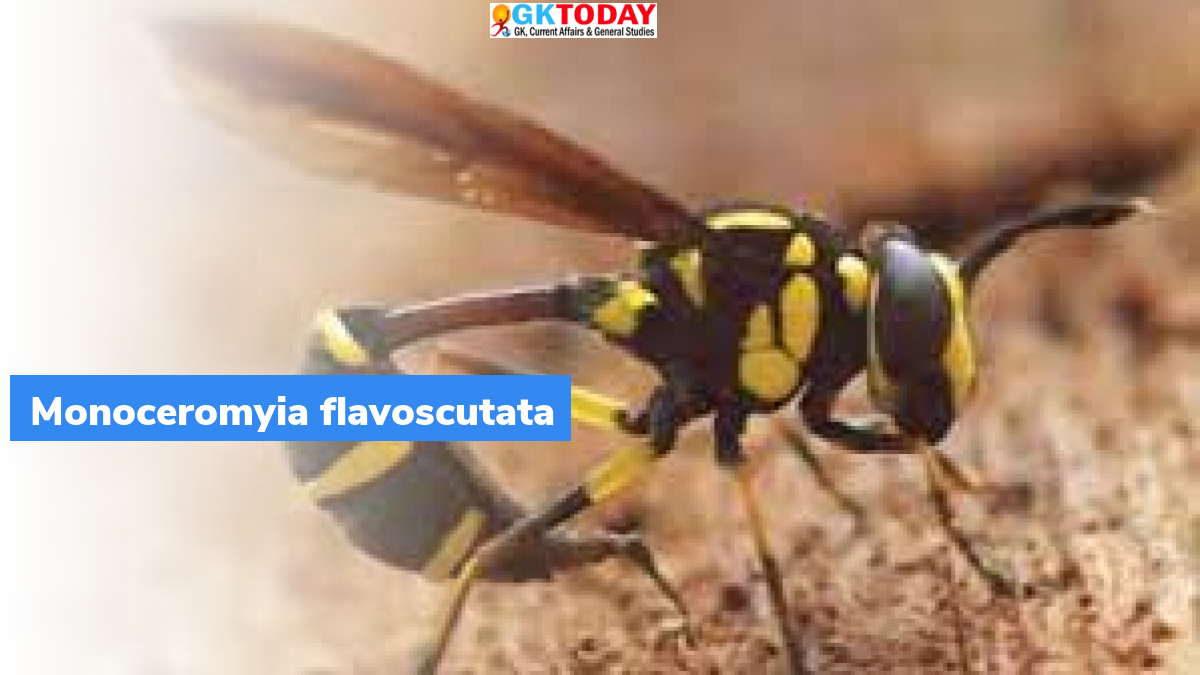What is Monoceromyia flavoscutata?
It is a new species recently discovered in India. Along with Monoceromyia flavoscutata, researchers also found Monoceromyia nigra. These newly discovered species were classified as a new type Syrphid flies.
About the discovery
- The species were discovered by scientists of a research museum in Germany.
- They are wasp like flower flies or syrphid flies.
- Monoceromyia flavoscutata was discovered in Dindigul district of Tamil Nadu.
- Monoceromyia nigra was discovered in Bastar district of Arunachal Pradesh.
- The species are found in western ghats and north eastern India.
- They were named so because of their black colored thorax and yellowing in their body.
About Monoceromyia
The Monoceromyia genus is generally referred to as syrphid fly. They are generally found in Australasian, Afrotropical, Neotropical and Oriental regions. Afrotropical includes Africa, Arabian Peninsula, south of Sahara Desert, southern Iran, Madagascar, islands of western Indian Ocean and extreme south west Pakistan. The oriental region refers to East, South and Central Asia. Neotropical region includes South America, Caribbean and Central America.
Syrphid flies
They are also called hoverflies or flower flies. They are the major enemies of slow-moving insects and aphids. As they resemble bees or wasps they are some times called syrphid bees. They often hover around flowers. Just like the newly discovered species, most of them have black and yellow stripes. These stripes give them the bee like appearance. They are hairy with short antennae and thin abdomen. They lay white coloured eggs. Summer is their egg laying season. One single female lays several hundreds of eggs in a single season.
Conservation status
They are listed as endangered in the western ghats and north eastern India.
How do they help farmers?
The species feed on nectar and pollen grains. Their larvae feed on decaying plants and animal matter, aphids and other plant sucking insects. Aphids are crop pests. As these bees or flies, help in pollination and their larvae control pest population, they are the best friends of farmers. Sometimes, gardeners and farmers cultivate companion plants to attract these flies.
Month: Current Affairs - January, 2022
Category: Environment Current Affairs


